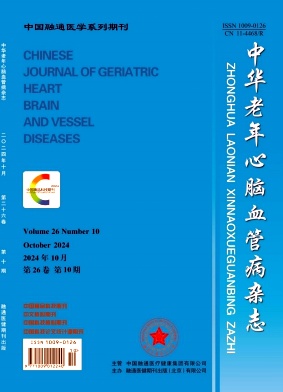Potential use of prophylactic intracoronary atropine in reducing reperfusion vagal reflex-related events in ST-elevation myocardial infarction
引用次数: 0
Abstract
In this study, we evaluated the potential use of atropine in reducing reperfusion vagal reflex-related events during emergency percutaneous coronary intervention (PCI) for acute inferior ST-elevation myocardial infarction (STEMI). Retrospectively, we included 142 patients with inferior wall STEMI, who were treated between October 2015 and October 2020, in this study. The patients were divided into an experimental group (n = 70) and a control group (n = 72) depending on whether they received prophylactic intracoronary atropine. The experimental group was then subdivided into a low-dose group (0.5 – 1 mg atropine, n = 40) and a high-dose group (2 mg atropine, n = 30). We compared the incidence of reperfusion vagal reflex-related events and the application of temporary pacemakers between these groups. The results showed that the incidence of bradycardia (24.3% vs. 45.8%, P = 0.007), hypotension (18.6% vs. 40.3%, P = 0.005), ventricular tachycardia (4.3% vs. 19.4%, P = 0.005), and ventricular fibrillation (8.6% vs. 20.8%, P = 0.040) as well as the application of temporary pacemakers (14.3% vs. 29.2%, P = 0.032) were all much lower (all P < 0.05) in the experimental group than in the control group. In addition, the incidence of bradycardia (10% vs. 35%, P = 0.016), hypotension (6.7% vs. 27.5%, P = 0.027), ventricular tachycardia (6.7% vs. 25%, P = 0.044), and ventricular fibrillation (0 vs. 15%, P = 0.034) as well as the application of temporary pacemakers (3.3% vs. 22.5%, P = 0.036) were all much lower (all P < 0.05) in the high-dose group than the low-dose group. Our findings demonstrate that atropine pretreatment could prevent reperfusion vagal reflex-related events and reduce the application of temporary pacemakers during emergency PCI for acute inferior STEMI. These effects can be significantly enhanced by high-dose (2 mg) atropine pretreatment.预防性冠状动脉内阿托品在减少st段抬高型心肌梗死再灌注迷走神经反射相关事件中的潜在应用
在这项研究中,我们评估了阿托品在急性下st段抬高型心肌梗死(STEMI)急诊经皮冠状动脉介入治疗(PCI)期间减少再灌注迷走神经反射相关事件的潜在用途。回顾性研究纳入了142例2015年10月至2020年10月间接受治疗的下壁STEMI患者。根据患者是否接受预防性冠状动脉内阿托品治疗分为实验组(n = 70)和对照组(n = 72)。将实验组再分为低剂量组(0.5 ~ 1mg, n = 40)和高剂量组(2mg, n = 30)。我们比较了两组再灌注迷走神经反射相关事件的发生率和临时起搏器的应用。结果显示,两组患者的心动过缓(24.3% vs. 45.8%, P = 0.007)、低血压(18.6% vs. 40.3%, P = 0.005)、室性心动过速(4.3% vs. 19.4%, P = 0.005)、室颤(8.6% vs. 20.8%, P = 0.040)及临时起搏器的使用(14.3% vs. 29.2%, P = 0.032)的发生率均显著降低(P <0.05),实验组与对照组比较差异有统计学意义。此外,心动过缓(10% vs. 35%, P = 0.016)、低血压(6.7% vs. 27.5%, P = 0.027)、室性心动过速(6.7% vs. 25%, P = 0.044)、室性颤动(0 vs. 15%, P = 0.034)以及临时起搏器的使用(3.3% vs. 22.5%, P = 0.036)的发生率均显著降低(P <高剂量组与低剂量组比较差异无统计学意义(0.05)。我们的研究结果表明,阿托品预处理可以预防迷走神经反射相关的再灌注事件,并减少急诊PCI治疗急性下段STEMI时临时起搏器的应用。高剂量(2mg)阿托品预处理可显著增强这些作用。
本文章由计算机程序翻译,如有差异,请以英文原文为准。
求助全文
约1分钟内获得全文
求助全文
来源期刊
自引率
0.00%
发文量
7790
期刊介绍:
Chinese Journal of Geriatric Heart Brain and Vessel Diseases (monthly) was founded in 1999. It is a medical professional academic journal published domestically and internationally and is supervised by China Rongtong Medical Health Group Co., Ltd. and sponsored by Rongtong Medical Health Journal Publishing (Beijing) Co., Ltd. It mainly reports on the latest research results and research progress of professional academic hotspots such as clinical diagnosis and treatment of elderly cardiovascular and cerebrovascular diseases. The main columns include expert reviews, guidelines and consensus, guidelines and suggestions, expert forums, meeting minutes, clinical research, basic research, short reports, experience exchange, academic trends, case reports, reviews, and continuing education. Over the years, it has always adhered to the purpose of serving the development of geriatric medicine, so that the journal has been continuously improved and improved in terms of journal quality and academic level, and gradually gained recognition and praise from medical experts.
Chinese Journal of Geriatric Heart Brain and Vessel Diseases is a high-quality Chinese scientific journal, a core journal in the clinical medicine/special medicine category of the 2023 edition of the "Overview of Chinese Core Journals", and a statistical source journal for Chinese scientific papers (Chinese core scientific journals). It is included in the "Compendium of High-Quality Scientific and Technological Journal Classification Catalog" released by the China Association for Science and Technology in 2023, and is included in the World Journal Impact Index (WJCI) report (2023 Science and Technology Edition). It is also included in more than 10 domestic and foreign databases such as the World Health Organization (WHO) and the American Chemical Abstracts.

 求助内容:
求助内容: 应助结果提醒方式:
应助结果提醒方式:


